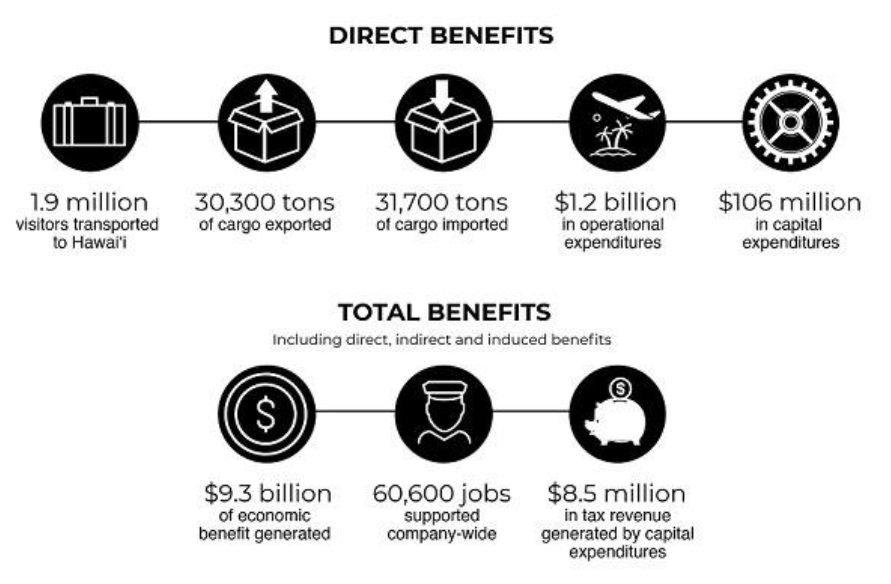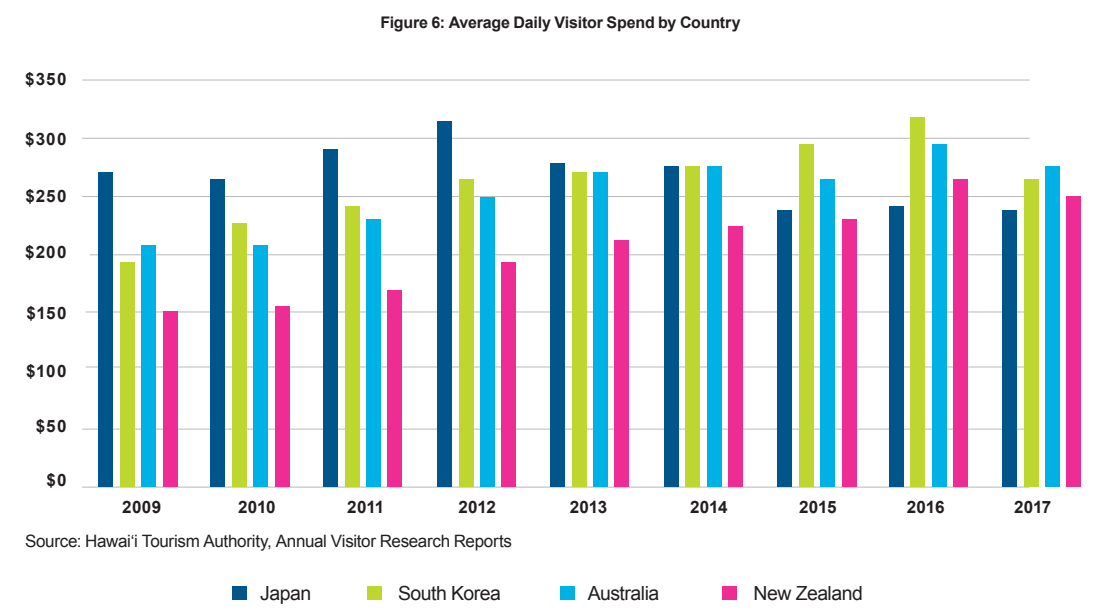The analysis by global consulting services company ICF examined the most recent publicly available full-year data to assess Hawaiian's economic impact to its home state. "Due to the State's unique geography, HA (Hawaiian Airlines) provides a service to Hawai'i that is unmatched anywhere else in the US and most of the world," the report concluded. "The regional economy would be severely stalled without the airline's inter-island, domestic and international flights."
The carrier is Hawai'i's oldest and longest-serving airline, whose core mission to serve Hawai'i has guided its global growth since its founding as Inter-Island Airways in Nov-1929. The report, which was commissioned by the airline, noted that in addition to direct benefits derived from visitor and employee spending, the airline generates regional employment and revenue through spending on daily operations, capital investments, and indirect spending by visitors and passengers.
"There is no other state that relies so heavily on air transport to connect itself geographically," says Hawai'i economist Paul Brewbaker, who contributed to the report.

Alongside the economic impact, the ICF analysis says Hawaiian Airlines supports 60,600 total jobs, and transported 2.7 million passengers to the Islands. These numbers are identified a result of the multiplying effects of the airline's direct industry activity; where every USD1 of direct activity produces a total effect that is nearly 2.0 times greater than the initial spending.
For example, when wages are paid to airline employees or when airline passengers spend money on tourism, these dollars ripple through the economy and generate a secondary impact that doubles its size. This secondary activity is felt across the economy as each dollar is being spent at a wide range of local businesses.
Visitors to the Hawaiian Islands spend money on local transit, such as taxis and shuttles, lodging, dining, souvenirs, entertainment, and travel arrangements and reservation services. "These visitors tend to have different spending patterns and varied lengths of stay depending on their country of origin," acknowledges the report.
CHART - The average direct visitor spend per trip differs significantly by point of origin Source: ICF analysis
Source: ICF analysis
For example, visitors from Japan tend to spend over 30% less per trip than visitors from Europe and spend less than 50% as much time, per stay, in Hawai'i, according to tourism authority data. But, visitors from Japan have been an important stimuli of Hawaii's tourism economy, alongside arrivals from China, South Korea, and Australia, according to ICF. Japan has consistently had the most residents take trips by air to Hawai'i.
The research highlights that Australian residents were the highest daily spenders in Hawai'i in 2017, followed by South Koreans and New Zealanders. From 2009 to 2017 the average daily spending for visitors from New Zealand increased by 66%, while spending by South Korean and Australian visitors has increased by over 30% in the same time period.
Spending by Japanese visitors decreased by 11% over the 9-year period. Over the same time period Japan's GDP decreased by nearly 5% per year on average, so decreases in visitor spending may be related to overall declines in the Japanese economy, notes ICF.
